 Unique, "EB on Breast"
Unique, "EB on Breast"
1787 Brasher Doubloon from
The Gold Rush Collection
|
Numismatic "Gumshoe:" On the Trail of King Farouk
By Carl N. Lester
Prologue
|

|
|
Aside from a casual interest,
I first became really intrigued with the "King Farouk
auction" after purchasing a copy of
Abe Kosoff
Remembers
, a compilation
of
Coin World
articles on various topics by the "Dean of Numismatics."
Mr. Kosoff had devoted an entire chapter to "The
Farouk Story,"which described the famous
Palace
Collections of Egypt
coin auction, featuring the numismatic collection of
the former King Farouk of Egypt, that took place at Koubbeh
Palace, Cairo, in February and March 1954.
As I read Abe Kosoff's reminiscences of the long-ago
auction, I felt that the "Cairo coin caper"
was the ultimate numismatic adventure.
|
 |
King
Farouk: Personifying "the Hobby of Kings"
|
 |
 |
|
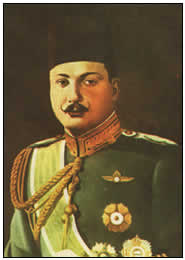
King Farouk of Egypt
|
King Farouk the First of Egypt,
who reigned from 1936 until 1952, was a prolific
collector.
His taste for the rare and unusual was the
catalyst for his assemblage of a diverse collection
of items from around the world, even including some
unsavory "collectibles."
His coin collection included an estimated
8,500 gold coins and medals.
King Farouk made most of his coin purchases
in the 1940s, in an era when a numismatic dollar
(and an Egyptian pound) went a long way.
Several American dealers supplied the king with
coins, but they soon discovered that a downside
to selling to him was that it usually took a long
time to receive payment, especially if the invoice
totaled more than $10,000. The larger invoices had
to be routed to the Egyptian treasury, significantly
increasing the time it took for the payment to be
received, whereas the king had the authority to
authorize payment of the smaller invoices. Not surprisingly,
the American dealers soon learned to limit the invoices
to less than $10,000. When all was said and done,
King Farouk had amassed one of the largest, most
important collections of coins in the history of
numismatics.
|
|

|
The King Farouk Auction: A Numismatic Legend
|

|
|
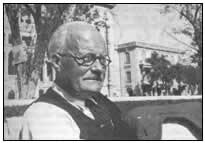
Fred Baldwin, on the
lawn of Koubbeh Palace,
Cairo, 1954
|
After the Egyptian military forced
King Farouk to flee the country in 1952, the American
coin dealers had a great interest in what was to
become of the Farouk Collection. Abe Kosoff goes
into great detail in his book concerning the pre-sale
uncertainty and negotiations that took place. Eventually
the Egyptian government established a sale date
and the London firm of Baldwin & Co. was hired
to describe the coins, with Sotheby & Co. publishing
the catalog. The coins and medals volume was one
of a set of Sotheby catalogs entitled
The Palace
Collections of Egypt
,
which offered several categories of the king's collectibles,
but did not mention King Farouk by name.
|
|
|
Because Fred Baldwin had to catalog
the coins in Cairo, under military guard, and in a short
period of time, it was not possible to do the great collection
justice.
Due
to its sheer size, most of the coins were sold in large
lots (often with fifteen or twenty coins per lot), sorted
by denomination, with a variety of dates and mintmarks.
Thus, most lots had a combination of rare and
common coins.
|

|
|
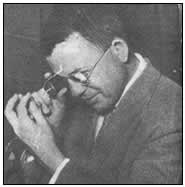
John J. Pittman examines
a coin at the Farouk
Auction, Cairo, 1954
|
A number of well-known American
dealers and collectors attended the sale in Cairo.
Dealers in attendance included Abe Kosoff, Sol Kaplan,
Bob Schermerhorn, James Randall, Paul Wittlin, and
Hans Schulman. Prominent collectors included John
J. Pittman, Gaston DiBello, and Ambassador &
Mrs. R. Henry Norweb.
A number of factors prevented the
coins from reaching their optimum value at the auction.
These included the remote location, the uncertain
financial arrangements, the political instability,
the large lots, and the awkward manner in which
the coins were presented for lot viewing. Collectors
such as John J. Pittman realized the true opportunity
to acquire important pieces at "fire sale"
prices and made the most of it.
Mr. Pittman reportedly took out a second
mortgage on his residence to finance the trip and
his purchases, which turned out to be among the
most significant of his numismatic career.
|
The sale was complicated by the fact
that King Farouk had outstanding bills in excess of $300,000
from dealer Hans Schulman. After much uncertainty and following negotiations
with the Egyptian government, an arrangement was made
whereby Mr. Schulman was issued a credit in the amount
of the due bills, against which auction purchases could
be made. In order to recover his financial interest, Mr. Schulman became
a major buyer at the auction, often allowing other dealers
to obtain coins from his repurchased lots.
After reading about the "cloak and dagger" surrounding
the King Farouk auction, I was fascinated!I wanted to acquire a King Farouk piece
that would fit my specialty, Dahlonega gold coins.
|

|
The King Farouk Auction Catalog: Realizing that the Trail was Cold
|

|
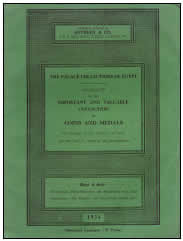
The King Farouk
Auction Catalog
|
Not long afterward I had occasion
to attend the Anniversary Convention of the American
Numismatic Association, held in late July 1993 in
Baltimore, Maryland.
I can remember fantasizing as I flew on the
jet from Atlanta to Baltimore, pretending that I
was on my way to Cairo, Egypt in 1954 for the King
Farouk auction.
I really enjoyed the convention, which
I attended with my father. One of the items that
I acquired in Baltimore was an original copy of
the coins and medals volume of
The Palace Collections
of Egypt
, obtained
from numismatic literature dealer Charles Davis.
It didn"t take me long to
search out the large lots of gold coins that contained
Dahlonega pieces.
One aspect of the catalog was disappointing,
from a research standpoint.
Not a single Dahlonega coin was plated
in the catalog.
Even if some had been, it probably would
have been of only marginal value, as the catalog
is well-known for the abysmal coin photography.
It was obvious to me that it would be impossible to trace a
Dahlonega coin to the Farouk auction based on the
Sotheby catalog alone.
At the convention I also had my first
lesson on the value of the Farouk pedigree.
An XF40 1844-C half eagle traced to the Farouk auction, which
catalogued for $2,700, brought $5,720 in the Heritage
Numismatic Auctions sale in Baltimore. I also got to meet Farouk auction attendee
John J. Pittman at the convention.
|
|

|
The Armand Champa Library, Part One: A Break in the Case
|

|
|
In November 1994, Bowers and
Merena held the first of the Armand Champa Library
auctions.
Mr. Champa, a well-known collector of numismatic
literature from Lexington, Kentucky, owned one of
the finest, most complete numismatic libraries.
Many of his books were beautifully bound
by master binder Alan Grace.
His library ultimately realized over one million dollars in
the four Bowers and Merena sales.
|
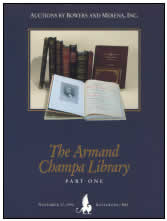
|
One item from the first Champa
sale really piqued my interest.
It was lot 493, dealer Sol Kaplan's "sales
room copy" of
The
Palace Collections
of Eqypt
coins
and medals catalog, magnificently bound, presumably
by Alan Grace, in green half morocco.
Most importantly, Mr. Kaplan had recorded
the buyers of the lots in the American section of
the sale.
What an important research tool this would
be!
The
lot was estimated at $750.
I took a deep breath and sent in a mail bid
of $1,100.
I called Bowers and Merena at the earliest opportunity
and I was very disappointed to learn than I had
not been successful.
Thankfully, I had the presence of mind
to ask to speak with Rick Bagg, Bowers and Merena's
auction director.
I told Mr. Bagg that I was the underbidder
for lot 493 and was concerned that very important
information was about to slip away.
I gave him the lot numbers of all of the
Dahlonega coins in the Farouk catalog and he was
most kind in transcribing the buyer's name for each
of the lots, from Sol Kaplan's annotations, which
he sent in a subsequent letter to me.
Thus, even though I did not have the annotated
catalog, I had the salient information it contained,
at least for the Dahlonega coins.
|
|
 |
|
In the letter from Bowers and Merena,
I recognized several well-known numismatic names as being
the winners of the lots containing the Dahlonega pieces,
including Pittman, DiBello, Kosoff, Kaplan, and Schulman.
The first two were the most significant, since
they were collectors, where the coins could be more easily
traced.
According
to the letter, (John J.) Pittman had purchased lots 248,
249, and 251 in Cairo, which contained the following Dahlonega
half eagles:
1838-D, 1839-D, 1840-D, 1841-D, 1842-D small date, 1842-D large
date, 1847-D, 1848-D, 1849-D, and 1850-D.
|

|
The Gaston DiBello Collection: File for Future Reference
|

|
|
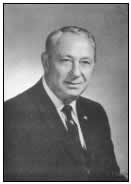
Gaston DiBello
|
The Bowers and Merena letter
also stated that (Gaston) DiBello, a Buffalo, New
York collector who won many awards exhibiting his
coins, had purchased lot 253 in the Farouk auction,
which contained the following Dahlonega half eagles:
1855-D, 1856-D, 1857-D, and 1858-D.
I knew that Gaston DiBello's gold coins had
been auctioned by Stack's in May 1970.
A quick perusal of the DiBello catalog indicated
that none of the 1855-1858 Dahlonega half eagles
were identified as having been from the Farouk auction,
nor were any of them plated, a situation that did
not advance my numismatic sleuthing.
Nonetheless, I knew that if I ever saw
one of these DiBello Dahlonega half eagles in a
future auction, my pulse would quicken.
The problem with the DiBello pieces would
be how to prove that the coins sold in 1970 were
the same ones he acquired in Cairo 16 years earlier.
|
|
|

|
The John J. Pittman Collection, Part One: Close, but No Cigar
|

|
|
I thought that the most fruitful possibility
lay with the Pittman coins, since he was still active
and had acquired more Dahlonega pieces from the Farouk
Collection than had Mr. DiBello.
I wrote a letter to Mr. Pittman, who lived in Rochester, New
York, asking if he would entertain an offer on any one
of the Dahlonega pieces obtained from Farouk.
I proposed that we meet at the Early Spring ANA
Convention to be held in Atlanta in March 1995.
Unfortunately, I never received a reply.
Only later did I learn that Mr. Pittman had been
ill.
Numismatics
lost a great one when John J. Pittman died in 1996.
|

|
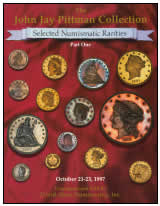
|
As with many other numismatists,
I eagerly awaited the first Pittman auction catalog,
splendidly produced by David Akers.
This part of the collection, to be auctioned in Baltimore in
late October 1997, included all of Mr. Pittman's
Dahlonega half eagles.
Much to my delight, each of the 1838-1842
and 1847-1850 Dahlonega half eagles in the Pittman
sale were attributed to King Farouk, and earlier
to the Col. E. H. R. Green Collection.
My sense of anticipation and awe for
this sale was undeniable.
I was determined to go to the auction.
As I was in pursuit of one of the King Farouk
pieces, I could not resist once again comparing
this adventure to the 1954 trip to Cairo.
As my wife had to remain home with my son, who was enrolled
in the first grade, my mother accompanied me to
Baltimore.
My father (and long-time partner in numismatics)
had passed away in 1993.
In Baltimore, after examining all
of Mr. Pittman's Dahlonega Mint coins, each of which
was uncertified, I had the most interest in the
1839-D half eagle, mainly because of the outstanding
eye appeal and the fact that it is a "one-year
type" coin.
The piece, graded about uncirculated by David Akers, but looking
very much AU58 to my eye, was hammered down for
$10,450, including the buyer's fee, a bit more than
I felt comfortable in bidding.
|
|
|
All of the Dahlonega coins that were
pedigreed to the Farouk auction brought strong prices,
even the 1849-D half eagle that was bent so severely that
it looked as if it would rock back and forth.
I was so disappointed at losing the 1839-D
half eagle, as well as being stunned by the strong prices,
that I came away with nothing.
Later I purchased the Pittman 1855-D half eagle
from Dallas dealer Doug Winter, a well-known rare gold
specialist, as a memento of the Pittman auction, albeit
non-Farouk.
I
felt discouraged about the prospects for tracking down
a Farouk piece for my Dahlonega collection.
Every time I had seen a Farouk Dahlonega or Charlotte
coin auctioned, it had brought a strong, if not downright
runaway price.
|

|
The Harry W. Bass, Jr. Collection: Opportunity Knocks Again
|

|
|
The next chapter in this numismatic
narrative involves the sale of the Harry W. Bass, Jr.
Collection of gold coins.
A portion of the Bass holdings was to
be preserved by the Harry W. Bass, Jr. Research Foundation,
based in the late collector's long-time city of residence,
Dallas, Texas.
These coins were reported to consist primarily
of the pre-1834 issues that illustrated his studies in
the field of gold coin die varieties.
The numismatic world had eagerly awaited the dispersal
of the remainder of the Bass coins, since it was announced
that Bowers and Merena would auction the pieces in a series
of sales, beginning in the spring of 1999.
This important collection eventually realized
over 38 million dollars in the four sales, overtaking
John J. Pittman for the second most valuable collection
in American numismatic history.
The top spot is still held by Louis E.
Eliasberg, Sr., at over 44 million dollars.
|
|
The second Bass sale, held in October
1999, included the first Dahlonega gold coins.
One of the pieces, lot 1085, an 1856-D half eagle,
was pedigreed to the Gaston DiBello sale of May 1970.
What was not stated (I was likely the only person
who knew) was that this was probably the Farouk coin,
since Mr. DiBello had purchased the
Farouk lot containing the
|
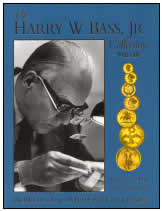
|
1856-D, per my earlier
Bowers and Merena letter.
The problem for me was that this coin was
uncirculated and was probably going to be out
of
my price range.
I was also a bit wary of this date, since
I knew that there was a large, recently discovered
hoard (reportedly over 40 pieces) of uncirculated
1856-D half eagles, some of which had already
started
appearing in the marketplace.
This coin also had a large copper streak
on the obverse, which detracted a bit from the
overall
appearance.
At the sale, the piece realized $10,925,
including the buyer's fee.
I felt that the coin would have brought much more if the bidders
had known that the piece was probably from Farouk.
The third Bass sale, held in late May 2000, offered
a better opportunity for me.
Lot 479 was Gaston DiBello's 1858-D half
eagle, which was also one of the dates that he had
purchased at the Farouk auction.
As with the 1856-D half eagle, it was not
listed in the Bass catalog as being from Farouk.
The piece was in a PCGS AU55 holder.
I really felt that this might be the chance
for me to obtain that illusive Farouk pedigree.
Aside from the obvious task of obtaining
the coin at auction, I was also faced with the burden
of quickly proving that the piece was from the Farouk sale.
|
|

|
The Col. Green Half Eagle "Photo Album:Another
Piece of the Puzzle
|

|
|
It had previously
been documented that, in the 1940s, King Farouk had
purchased
a large group of half eagles from the Col. E. H. R. Green
Collection, via the New York firm of Stacks.
Fortuitously
for me, at about the time of the Bass III sale, George
Kolbe issued
|
|
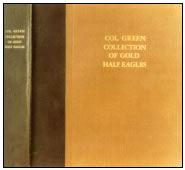
Lot 284,
Harry W. Bass Jr. Library,
Part Four
|
Part
Four of the Harry W. Bass, Jr. Numismatic Library
sale.
One of the lots, no. 284, really jumped
out at me.
It was the fabled photographic record of
the Col. Green half eagles, the very coins that
were reportedly sold intact to King Farouk.
I knew instantly that this could be the evidence
that I needed
.
I contacted Mr. Kolbe by e-mail and asked for a
description of the 1858-D half eagle from the
Col.
Green half eagle photo album, which he quickly
provided in an e-mail reply.
I thought his description was similar (but
not conclusively identical) to the photograph
of
the 1858-D half eagle in the Bowers and Merena
Bass III catalog.
Mr. Kolbe also offered a volume containing
the Col. Green eagle photographs. I had
|
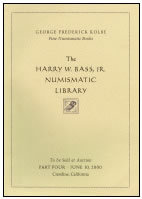
|
|
|
entertained the idea of getting several collectors to go in
with me and purchase the Col. Green half eagle photo
album, which was estimated at $2,500, but I was not able
to pull
it off.
As it turned out, the lot went for huge
money, bringing $13,200, including the buyers fee.
|

|
A Talk with Harvey Stack: Looking Back a Half Century
|

|
|
I also knew that Stack's had a copy of
the Col. Green half eagle photo album in their library
in New York.
I decided to call Harvey Stack and see what I could find out.
Mr. Stack was very helpful and spent considerable
time telling me what he knew about the album, as well
as the Col. Green and Farouk coins.
He said that the Chase Bank in New York
handled the Col. Green estate (following his death in
1936).
Col. E. H. R. Green was one of the richest men in America,
being the son of the infamous Hetty Green, better known
as "The Witch of Wall Street."
He was a hoarder, and there were enough coins in
his estate for two sets of quarter eagles, half eagles,
and eagles.
There
were also numerous double eagles.
Stack's reportedly acquired the coins from the estate slowly,
over a period of years, circa 1943-1945.
|
|
The coins were sorted by Stack's
into a number 1 set and a number 2 set, with the
number 1 set having the better pieces.
Mr. Stack said the number 1 quarter eagle,
half eagle, and eagle sets were photographed circa
1945-1946 by Stacks staff photographer, Sam Andre´,
who also worked for
PIC
magazine
(a large format competitor to
Life
),
and were made up into individual photo albums.
Mr. Stack believes that three sets of the
albums were made.
One went to his father, Morton, and one
to his uncle, Joseph.
The third set went to an American collector
named Clifford T. Weihman.
Mr. Stack said they had misplaced his
father's set, his uncle's set was in the Stacks
library, and the location of the third set was unknown.
I wondered if the two volumes from the Kolbe auction could
be part of the third set.
I have since learned that numismatic researcher
John Dannreuther has evidence that at least one
of the coins in the Col. Green half eagle photo
album was not part of Col. Greens original collection.
Mr. Stack went on to say that he was fairly certain
that the number 1 set of Col. Green's half eagles
was sold to King Farouk, circa 1945-1946.
He said the other set, presumably the
number 2 coins, was sold to the aforementioned Weihman
at about this same time.
He said Stack's had occasion to handle the
Weihman coins again in 1953 or 1954, selling them
to pharmaceutical magnate Josiah K. Lilly.
It is assumed that most or all of these coins
would now be on display in the Lilly Collection
in the Museum of American History at the Smithsonian
Institution in Washington, D. C.
During our conversation, Mr. Stack also gave
me a good verbal description of the 1858-D contained
in the Col. Green half eagle photo album.
|

Col. E.H.R. Green
|
|
 |
An E-Mail to Dr. Richard Doty: A Cyber Visit to the Smithsonian Institution
|
 |
|
Since Mr. Stack did not seem 100% certain
that the number 1 set of the Col. Green half eagles
(the
set that was photographed) went to King Farouk, I wanted
to make sure.
I
e-mailed Dr. Richard Doty, the numismatic curator at
the
Smithsonian, whom I had talked to in March 2000, at the
special striking of the original toggle-joint steam
powered
coining press at the Franklin Institute in Philadelphia.
I sent him the composite description
of the Col. Green 1858-D half eagle obtained from Messrs.
Kolbe and Stack, and asked him to give me his opinion
as to whether or not the 1858-D half eagle in the Lilly
Collection was the same coin.
I knew that if it was, it would have meant that
the number 1 set of Col. Green half eagles went to Mr.
Weihman, and then to Mr. Lilly, instead of King Farouk.
Dr. Doty was very quick in his response, saying
that only the reverse of the coin was visible in the
display
case, but that he would later gain access to the piece
and give me a full assessment.
I soon got another e-mail from Dr. Doty, saying
that he had "eye-balled" the Lilly coin's
obverse and reverse and that it had
none
of the characteristics of the piece that was described
in my e-mail.
Thus,
this trail was a dead end and the signs were now pointing
to Cairo.
|
 |
An E-Mail from "The Big Apple:"
Closing in on the Quarry
|

|
|
At this point I felt reasonably confident
that the DiBello-Bass coin had come from King Farouk.
I soon received an e-mail from Al Adams, a great friend and
noted specialist in southern gold coins, who was in New
York to attend the Bass III auction, with a description
of the DiBello-Bass 1858-D half eagle.
After examining the piece in person, he
stated that it was "a gorgeous, original coin with
light red peripheral toning, with a very decent, even
strike."According to Al, it was a "solid AU55+,"with
normal contact marks expected for the grade.
Al went on to say that the coin was a
beautiful example of one of his favorite dates, possessing
"great eye appeal."
Al concluded by stating "I think
you would like it.
I love it".
|

|
Harry Bass III: The Third Time's a Charm
|

|
|
I felt strongly that this was my kind
of coin and I asked Al to do his best to obtain the piece.
To be absolutely sure of the coin's provenance,
I asked Al to go by the Stack's library to see the Col.
Green half eagle photos for himself, prior to bidding.
The auction was soon upon us.
The day that the DiBello-Bass 1858-D half eagle was to be auctioned,
Thursday, May 25, 2000, I had a business trip to Auburn
University to visit with their Textile Engineering Department.
That evening, as the Bass III auction was taking place in New
York, our dinner host was Auburn's Dr. Yasser Gowayed,
who hailed from Cairo, Egypt.
Somehow, I felt that this was a sign that I was
going to be successful in obtaining the Farouk piece.
As we dined and discussed Cairo, King Farouk, Koubbeh
Palace, and the King Farouk auction, my thoughts were
somewhere between Cairo and New York.
When I returned home the following day,
I had an e-mail from Al in New York, which he sent just
prior to the auction.
He said, "I examined the Col. Green
half eagle photo album today at Stack's .
I am certain the Bass coin is the coin pictured in the Col.
Green photo album.
Congratulations on your research.
The auction begins in one hour and I will do my
best to capture it for you.
|

|
Epilogue
|

|
|
|
|
There was no "post
sale"e-mail from Al, so I had to "sweat
it out"a little longer.
I was concerned that perhaps he was
not able to get the coin.
I figured that Al was probably back from
New York by now, so I picked up the phone
and soon discovered that I was the proud new
owner of the Col. Green-King Farouk-DiBello-Bass
1858-D half eagle!
I had paid "strong money"for
the coin, but I was confident that it was
because of the eye appeal of the piece, not
because of the King Farouk connection (a fact
that presumably only Al and I knew).
I shudder to think what the price would
have been if it had been pedigreed to the
Egyptian monarch in the Bass III catalog.
|

|
|
 My "Maltese Falcon"
My "Maltese Falcon"
in the
reattributed
PCGS holder
|
Al has an expression
that he sometimes uses when he does
not particularly like a coin.
He says, "It doesn't
blow my dress up."
After receiving the King Farouk
piece, I thought the eye appeal was
outstanding, exceeding all of my expectations.
I was also thrilled with the coin's provenance, so I sent
Al an e-mail right away, informing
him
that the coin "blew my dress way
up high!"
My work as a "numismatic sleuth" was
now complete.
Having obtained my equivalent
of the priceless Maltese falcon, I
agreed
with Humphrey Bogart, playing detective
Sam Spade, that this was
"the
stuff that dreams are made of".
|
|
|
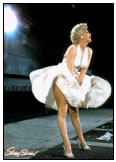
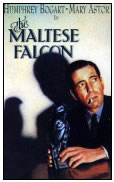
|
|
|
|
|


 Unique, "EB on Breast"
Unique, "EB on Breast"

 Unique, "EB on Breast"
Unique, "EB on Breast"